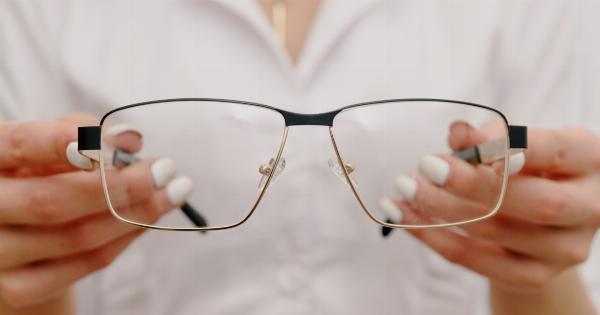Blurred vision occurs when objects appear out of focus, hazy, or distorted. This can affect one or both eyes, and it may be temporary or persist over time. Blurred vision can affect your quality of life and limit your ability to perform daily tasks.
In this guide, we will take a closer look at the six most common causes of blurred vision.
1. Refractive Errors
Refractive errors are the most common cause of blurred vision. This occurs when the shape of your eye does not bend light correctly, causing images to appear blurry.
The most common types of refractive errors are nearsightedness, farsightedness, and astigmatism.
If you have nearsightedness, distant objects appear blurry, while close objects appear clear. If you have farsightedness, close objects appear blurry, while distant objects appear clear.
If you have astigmatism, images appear blurry or distorted because the cornea (the clear layer on the front of the eye) is shaped irregularly.
Refractive errors can be corrected with glasses, contact lenses, or refractive surgery. It is important to have regular eye exams to detect and correct refractive errors.
2. Age-related Macular Degeneration
Age-related macular degeneration (AMD) is a common eye condition that causes the central part of the retina (the macula) to deteriorate over time. This can cause blurred or distorted central vision, but the peripheral vision remains clear.
AMD is the leading cause of vision loss in people over 50 years of age.
The risk factors for AMD include age, genetics, smoking, and a diet low in fruits and vegetables. There is no known cure for AMD, but early detection and treatment can slow its progression and preserve vision.
3. Cataracts
Cataracts are a common eye condition that affects the lens of the eye, causing it to become cloudy. This can cause blurry or hazy vision, as well as sensitivity to light and glare.
Cataracts are more common in older adults, but they can also develop in children or younger adults.
Cataracts can be treated with surgery, where the cloudy lens is removed and replaced with a clear artificial lens. If cataracts are left untreated, they can lead to blindness.
4. Glaucoma
Glaucoma is a group of eye conditions that damage the optic nerve, which carries visual information from the eye to the brain. This can cause blurred or hazy vision, as well as a loss of peripheral vision.
Glaucoma is the second leading cause of blindness worldwide.
The risk factors for glaucoma include age, genetics, high eye pressure, and a family history of glaucoma. Treatment for glaucoma may include eye drops, laser therapy, or surgery.
5. Diabetic Retinopathy
Diabetic retinopathy is a complication of diabetes that affects the blood vessels in the retina. This can cause blurred or distorted vision, as well as floaters and flashes of light.
Diabetic retinopathy is the leading cause of blindness in working-age adults.
The risk factors for diabetic retinopathy include high blood sugar levels, high blood pressure, and a long history of diabetes. Treatment for diabetic retinopathy may include laser therapy or surgery.
It is important for people with diabetes to have regular eye exams to detect and treat diabetic retinopathy early.
6. Dry Eye Syndrome
Dry eye syndrome occurs when the eyes do not produce enough tears or when the tears evaporate too quickly. This can cause blurry or hazy vision, as well as eye discomfort, redness, and sensitivity to light.
Dry eye syndrome is more common in older adults, women, and people who take certain medications.
Treatment for dry eye syndrome may include artificial tears, prescription eye drops, or in severe cases, punctal plugs to block the tear ducts and keep tears from draining away too quickly.
Conclusion
Blurred vision can have a significant impact on your quality of life, but it is often treatable.
The six most common causes of blurred vision include refractive errors, age-related macular degeneration, cataracts, glaucoma, diabetic retinopathy, and dry eye syndrome.
If you experience blurred vision, it is important to see an eye doctor for an evaluation. Early detection and treatment can help preserve your vision and prevent vision loss.




























